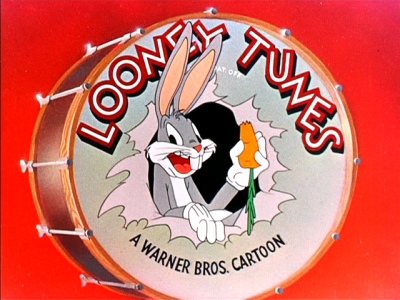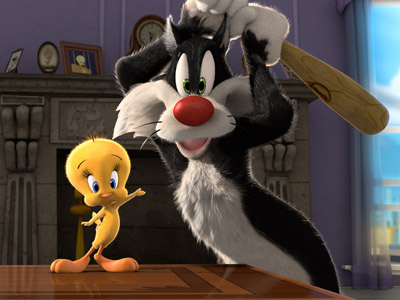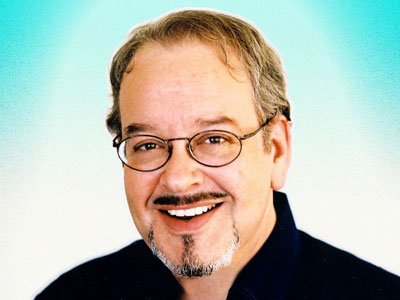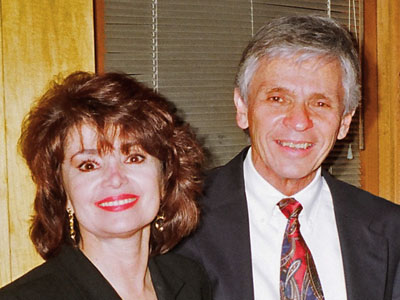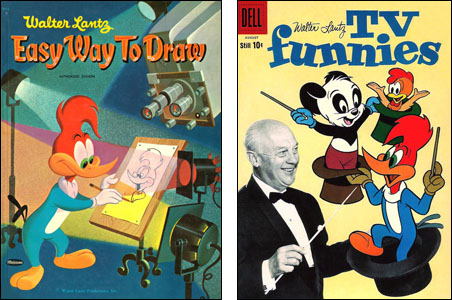Frank Nelson
by Mark Evanier
ORIGINALLY PUBLISHED 12/1/95
Comics Buyer's Guide
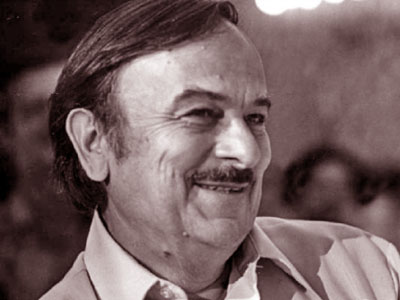
Long before my time — and, perhaps, yours — there was a thing called radio. I don't mean "radio" like the thing that broadcasts Howard Stern, baseball, Top 40 countdowns, Rush Limbaugh, easy listening and news. I mean "radio" like the thing that broadcast The Lone Ranger, The Shadow, Amos and Andy, Henry Aldrich and Duffy's Tavern. Radio used to feature all of them plus many other wonderful comedy shows and dramas.
If you polled radio buffs as to which was the best show ever done, I'd be very surprised if The Jack Benny Program didn't place in the top three. It was one of the top shows for many years and, even today, when you can listen to some of the most popular shows of the day and wonder what anyone liked about them, it holds up. It really was a very funny show.
One of the reasons, of course, was Jack Benny…a wonderful man and, as we shall see, a very brave one. Another was his writing staff, widely hailed as the best in radio. And still another was his supporting cast which included Don Wilson, Dennis Day, Sheldon Leonard, Mel Blanc, Benny Rubin, Phil Harris, Mary Livingstone and the very funny, gravel-throated Eddie "Rochester" Anderson.
All of the supporting players had funny lines on the Benny show. So did the guest stars. Everyone had funny lines on the Benny show except, usually, Benny. Jack always let everyone else have the joke; his job was to react to them and, usually, be the butt of everyone else's comments.
Benny didn't care if he got the laugh or the other guy got the laugh. He knew that if the show was funny, he'd be a hit, even if the audiences did spend most of their time laughing at what Dennis Day or Don Wilson said.
Most comics, past or present, would never have done that. Comedians who are stars of shows — especially if their name is part of the title — have been known to go through scripts, circle every funny line that isn't theirs and say, "Give those to me or cut them…this is my show." And it does not a lick of good to point to Jack Benny and to note that no comedian was ever more successful.
Of all the wonderful characters who frequented the show — some every week, others now and then — my favorite was Frank Nelson. Nelson's character never had a name and he never had a steady job. He would just pop up wherever the storyline took Jack Benny that week. If the plot called for Jack to go to a department store, Frank Nelson worked in the department store. If the plot called for Jack to go get his driver's license renewed, Frank Nelson was the guy behind the counter giving the eye exam. One time, the story had Jack dreaming of being a condemned criminal walking the last mile. The executioner turned out to be…well, you've got the idea by now.
The best part of every Frank Nelson appearance was the "reveal." Benny would approach a clerk whose back was turned. Jack would say "Excuse me" and the man would whirl around and be revealed as Frank Nelson. And the audience — this is the Benny TV show I'm talking about now, obviously — would get hysterical in anticipation of what was to come. They were rarely disappointed.
On radio, Nelson couldn't spin around and be revealed so he was, instead, identified by his signature line…he'd say, with a huge, phony smile, "Yesssssssss?" He said it on TV, too. And in movies. And almost anywhere else people hired him.
As an actor, Nelson worked a lot and not just for Benny. Last evening, watching Nick at Nite, I caught him on an old I Love Lucy. The night before, while playing with my TV satellite dish, I caught a few moments on Showtime of what must have been one of his last roles. It was a film called Malibu Bikini Shop and Nelson — wearing a leisure suit and a dreadful hairpiece — actually managed to steal the scene I caught from a bevy of beauty queens, each wearing a swimsuit crocheted out of a ration of dental floss.
He also used his old radio skills and penchant for overacting to do occasional work in radio commercials and animated cartoons. One of his latter jobs was in one of the prime-time Garfield cartoon specials, back before I began working on the cat.
Jim Davis, creator of Garfield, had written and was voice-directing the special and he had included a role for a clerk who was written as a Frank Nelson type. The character first appeared, as Frank always did, intoning, "Yessssssss?" The Casting Director, assuming prematurely that the guy who did that bit on radio must be deceased, booked voice actor Hal Smith for the role. (Most folks recall Hal in his role of Otis the Town Drunk on the old Andy Griffith Show but his main line of work for years was animated cartoon voiceovers.)
Hal arrived at the recording session and Jim explained to him what the role involved, how he'd be imitating that old radio actor, Frank Nelson.
"Why didn't you hire that old radio actor, Frank Nelson?" Smith asked.
"He's dead," Jim said, for that is what he'd been told.
"Gee," Hal said. "That's shocking…especially considering we had lunch together, half an hour ago."
Jim instantly had Hal call Frank and then reapportioned the other roles in the script so that Hal had other parts to play. About a half hour later, an elderly figure shuffled into the studio. Seeing him at a distance arriving, Jim whispered to an associate, "I think I was right."
But it was just a joke because, as it turned out, Frank only looked bad at a distance. Up close — and, more importantly, at the microphone — he was his old self. Everyone was quite pleased with his performance.
It must have been a few months later that I wrote a CBS Storybreak…an animated special called The Roquefort Gang, based on a kids' book of the same name. The plotline called for the title characters (they were mice) to battle a snotty, sarcastic cat. This was a few years before Jim Davis and I got together and I wound up writing the Garfield cartoons for much of a decade. At the time, my main concern was how to do this fat, snide pussycat character without him coming off as a road show Garfield.
One key was to think of (and write according to) a different voice. I don't know what made me think of Frank Nelson but, once I did, everything fell into place and the script wrote effortlessly. Then came the meeting to plan out the voice casting.
Usually, for a special like this, you spend a day at a recording studio, having a number of voice actors read for each of the lead roles. Each actor is recorded reading some audition copy a few times until the director decides the applicant is as good as he's going to get. Then the best "takes" are transferred to audio cassettes and whoever's in charge can listen to them and decide which voice they want for each role. Once this decision is reached, those selected are hired and everyone goes into a studio and the voice track is recorded, very much like an old radio show, with each actor at a microphone, reading his or her script out loud.
In an office at CBS, the show's producer and I huddled to decide what actors to audition for each role. But when it came to the cat, I said, "The cat is Frank Nelson." (I knew the guy was alive, even if Jim Davis's Casting Director didn't. I'd even obtained Nelson's agent's phone number.)
The producer started to put Frank Nelson's name on the audition list. I said, "No, no…I want to just give him the role. Let's not make him audition."
"We have to have him audition," the producer said. "What if we get him into the studio and he's wrong for the role?"
"He's not wrong for the role," I said. "Trust me. I wrote it with him in mind." I even pointed out the cat's first line. It was — you're way ahead of me — "Yesssssss?"
A friendly (sort of) argument followed. The producer argued that, if we hired Nelson without an audition and then didn't like him, it would cost about a thousand dollars to replace him. I said, "Just hire him. I'm sure about this."
The producer wasn't budging so, finally, I gave in. Frank Nelson was booked to come in and read for the part of the cat. There were seven roles to cast this way and we set up audition times for around thirty actors to read, many for more than one role.
It was one of the hottest days in L.A. history and, as is usual for auditions, we were running way behind. Still, it was an exciting day: There are dozens of wonderfully-talented actors and actresses in Hollywood who do cartoon voices and we had some of the best coming in to try out.
The producer and I ran the auditions at the recording studio. I'd go out to the lobby, where we usually had a half-dozen auditioners waiting, and call for the next person like a nurse telling someone in the waiting room that the doctor was ready to see them. I'd explain the role to the actor, we'd put them in the booth at the microphone, give them a chance to read the script aloud a few times to "warm up" and then we'd roll tape.
I will never, as long as I live, forget summoning Frank Nelson. He was sitting in the recording studio's lobby, absently paging through a magazine older than he was, surrounded by young actors who didn't know who he was. I stepped into the lobby and said, "Mr. Nelson?"
And he turned towards me — so help me — and went, "Yessssss?" Just like on the Benny show.
I broke into laughter and the other auditioners — the younger actors sitting in chairs around him — suddenly recognized him and they all broke into applause. I have never seen another actor get applause from his peers in the waiting room.
I escorted Mr. Nelson into the recording studio, explained the role ("Try to sound like Frank Nelson") and then I walked him into the booth and put him in front of the microphone.
The producer was sitting in the next room, next to the engineer. As I returned to his side, we could hear Frank Nelson over the speakers, reading the audition script aloud, warming up. We weren't rolling tape yet but, even warming up, it was obvious that Nelson was perfect for the role.
The producer turned to me, sheepish enough to be carved up for lamb chops. "You were right. We shouldn't have wasted his time bringing him in here. Let's just give him the role." (Of course I was right. Do you think I'd be telling you this story if I'd been wrong?)
It then became my mission to get Nelson out of the studio as fast as possible. If he stayed around and read more, there was at least the slim chance that the producer would have second thoughts or heard something he didn't like. I didn't want to risk that happening.
When an actor is in the booth, you talk to them via a microphone set-up called a talkback. I pushed the talkback button and interrupted Nelson's warm-up. He was expecting me to say we were about to roll tape on his reading but instead, I said, "Mr. Nelson, we're sorry we brought you in here and wasted your time. You're perfect for this role and we want you to play it. We'll be in touch with your agent. Thank you."
Or, at least, that's what I thought I'd said. A sour look came over him, then he shuffled out of the booth and out of our studio. He sure didn't look like an actor who had just gotten a job.
It was about two minutes later that it suddenly hit me: He thinks we dumped him.
Sometimes, a rude director will make a snap decision and cut off an actor, dismissing him without letting him finish the audition. Nelson either hadn't heard me well or I'd misspoken. Whatever, he thought we had decided he was so lousy that, though we'd dragged him in here on this 101-degree day, we weren't even letting him try out.
I sprinted out of the studio, out of the building and scanned the street up and down. No sign of Frank Nelson.
Well, he couldn't have gotten far. I ran around the side of the building to a small parking lot in the rear. There, just getting into a Chrysler Imperial, I found Mr. Nelson and I rushed up to him.
"I'm sorry if I didn't make it clear. You have the role. We want to hire you. You are so perfect for this role and so good that we were just embarrassed we asked you to audition."
He smiled and thanked me. He'd assumed exactly what I feared he'd assumed. We chatted for a few minutes and he asked me, confidentially, what his agent could ask for in terms of money.
Usually, these specials paid union scale, which most folks consider decent pay for a cartoon voiceover job. Few actors ever get more. I remembered the embarrassed look on our producer's face and told Nelson, "Try for double scale. I'll see that you get it." (Well, it wasn't my money…)
Talk of double scale delighted him…not so much for the cash, I'm sure, as the prestige. And he got it.
A week later, our casting selects gathered in the same studio to record the show. We had some terrific voice actors in that session.
During a break, the actors got to talking and Frank mentioned something that is always a sore point with voice actors.
"On the way over," he said, "I heard a radio commercial and someone was doing me…imitating my voice. Not very well, I might add." He did an impression of someone doing a bad Frank Nelson imitation. We all laughed but Frank didn't find the matter funny. Nor would you if you made your living with your voice and someone had just made some money imitating you.
"I'm around," he said. "I'm available…they could have called me." All the other actors nodded in sympathy. "And what burns me," Nelson continued, "is that some actor didn't say no. They asked him to imitate me and he didn't have the professional courtesy to suggest they hire me instead." He told the story about Hal Smith phoning him and said Hal had acted as a pro.
All present agreed with Mr. Nelson. But as he told the story, I noticed one of our other voice actors — a very fine mimic — getting smaller and smaller, quieter and quieter. And I realized why.
I wandered over to him and whispered, "What's it worth to you for me not to tell Frank who the actor was in that commercial?"
"I'll bear you a child," he whispered back to me…and I could see he felt awful over what he'd done.
That evening, he called me to get Frank Nelson's phone number. He'd decided to call him, confess, apologize and offer to give his fee for the commercial to Frank or the charity of his choice.
He called…and Nelson was very gracious about it, even admiring of the guts it took to own up to the deed. The offer of the fee was declined. Mr. Nelson settled instead for a promise that the impressionist would never do it again.
As far as I know, the actor never has replicated another voice artist's sound since then. And even after Nelson passed away a few years later and it might have been okay, the actor declined all bookings to do "a Frank Nelson type." It just made him uncomfortable, he said. I think it speaks well of him that it did.


